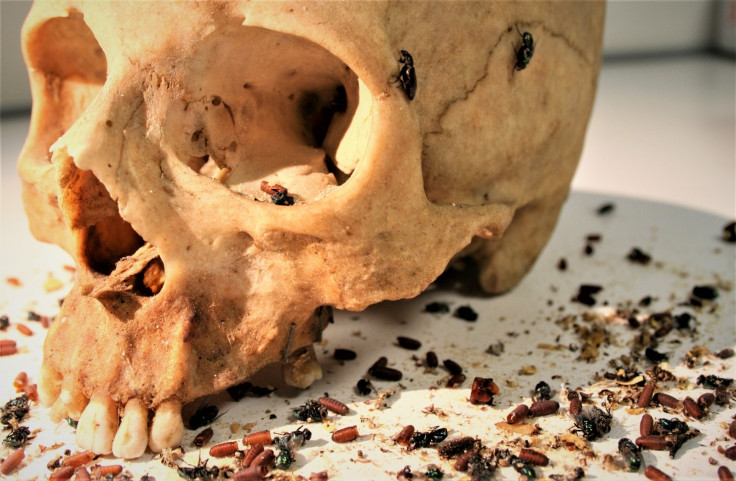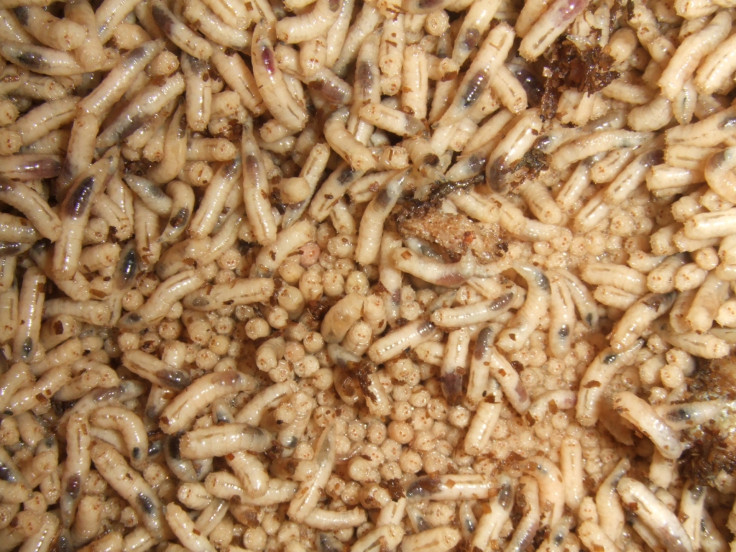How corpse-eating insects could help solve murder mysteries
Forensic entomology has become well known with the spread of TV shows dealing with criminal investigations.

On TV shows, criminal investigators always manage to crack the case with amazing new technologies and innovative scientific techniques. Studying insects feeding on the corpse, they are able to pinpoint the time of death and whether the body has been displaced with disarming simplicity.
But in real life, things are more complicated. Forensic entomology – the study of insects that inhabit decomposing remains to aid legal investigations – has been increasingly used since the 20<sup>th century in criminal investigations. This aspect of forensic science fascinates researchers and the general public alike.
There are nevertheless a lot of misconceptions about the discipline and it remains poorly understood. In practice, only a few forensic cases have successfully applied the method to determine if a cadaver has been moved from one place to another after death.
Indeed, the use of necrophagous insects as evidence of cadaver relocation involves a wide range of biological aspects and requires that a lot of environmental conditions are met to be used without errors.
A new study now published in PeerJ reviews what we know so far about forensic entomology as evidence of cadaver relocation, and how it can, and cannot be used.
A boom in the practice
Observations on insects and arthropods as forensic indicators were first documented in France and Germany in the late 19th century. The discipline quickly spread to the other side of the Atlantic, to the US and Canada. As scientific knowledge about insects' taxonomy and ecology progressed, it began to be used more and more in criminal cases, especially from the 1980s.
Basic research in the US, Russia and Canada has now paved the way to the routine use of entomology in forensic investigations, and the method has been popularised by television shows.
"TV series have undoubtedly contributed to make the method popular, although it is portrayed in a very simplified way. There are a lot of things that we can't do at the moment with forensic entomology, but these things are not a problem in these shows," study author Damien Charabidze, a researcher and professor in entomology and Forensic Science at Lille 2 University (France), told IBTimes UK.
Forensic entomology has concrete applications when trying to determine the time a person died. From a few hours to a few days after death, body's temperature can give you a good idea of the time of death. But once the body has finished cooling down, the method cannot be used. The only thing that can be said then is that death happened more than a couple of days ago.
From that point in time, forensic entomology can be helpful, because the rate at which insects' larvae develop on the corpse can give a good indication of the time that has gone by since death. "However, to use this method you need to know the temperature of the environment in which the person died, because temperature influences how fast the larvae develop. Obtaining this data is not always easy," Charabidze explained.

But in his study, Charabidze points out that using forensic entomolgy to assess if a cadaver has been moved from one place to another is even more problematic.
Experts working on the case indeed have to know elements such as necrophagous insect speciesdistribution, temporality, and behaviour to make a good assessment. Conducting genetic analyses, for example to see what the insects fed on may also be useful.
The problem is that such inferences should not be based on previous results obtained in other cases and at a broader scale. They should always rely on local experiments performed after the cadaver has been recovered, to comply with the circumstances of a given forensic case. This type of field work can be costly and complicated to do, and so it may not give entirely accurate results.
"To determine whether a cadaver has been moved, it might seem logical to use forensic entomology, but it is not actually used a lot in practice. There are so many limits, that it does sound a bit like science fiction. For it to work, you need to get all the necessary data at a local level, which is no easy feat. Today, with all the technologies we have to retrace the movements of people, tracking their phones for example, there is less rational for using forensic entomology as evidence of cadaver relocation," Charabidze said.
© Copyright IBTimes 2025. All rights reserved.






















